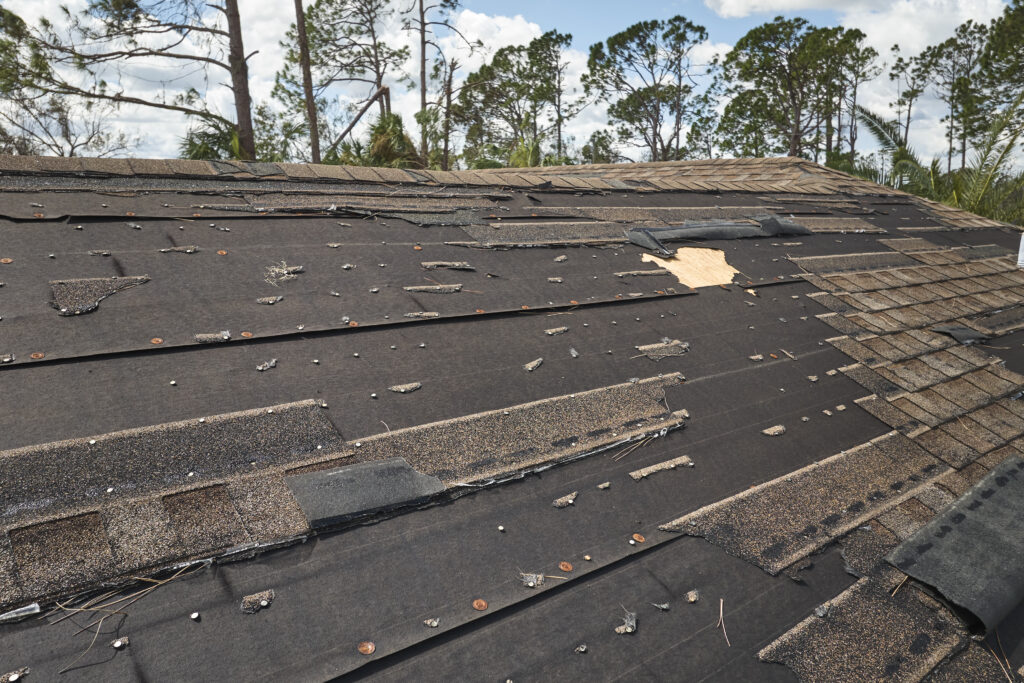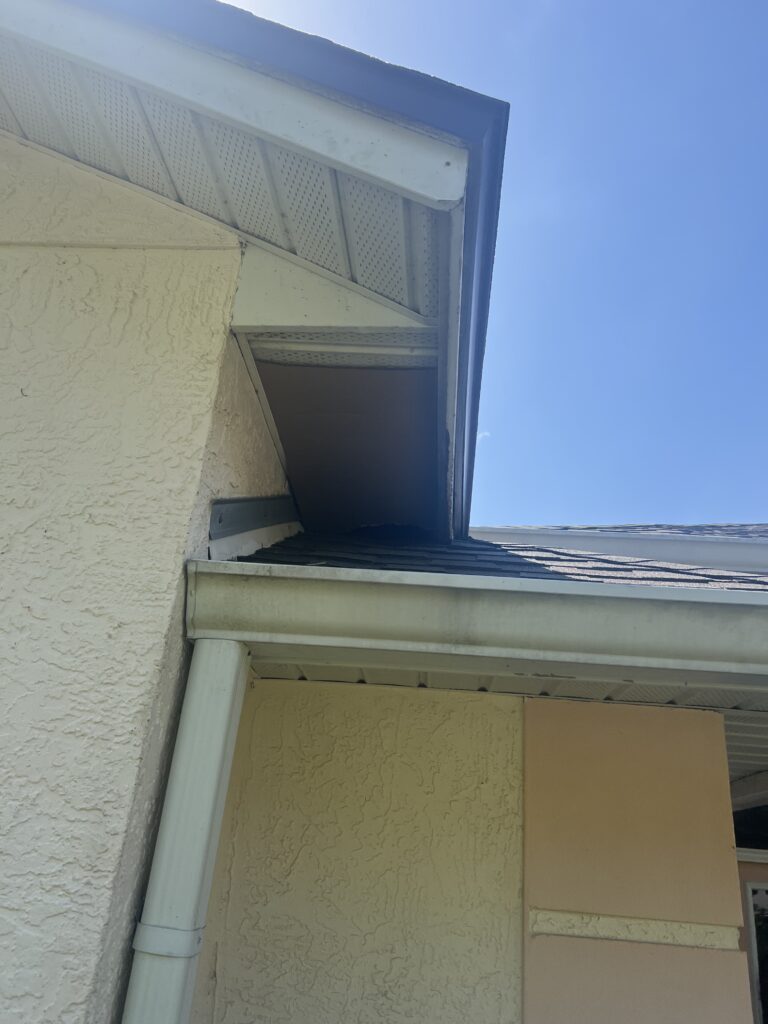A Guide to Spotting Hidden Hail Damage on Your Roof
A Central Florida summer afternoon can turn in an instant. Blue skies can give way to dark, menacing clouds, unleashing a sudden torrent of wind, rain, and sometimes, the unmistakable, unnerving sound of hail striking your roof. Once the storm passes and the sun returns, your first instinct is to look outside and assess the situation. You might notice some leaves and small branches on the lawn, but from the ground, your roof may appear to be completely unscathed. This is the hidden danger of hail damage; it is often subtle, insidious, and completely invisible to the untrained eye.
While a major hurricane with missing shingles is an obvious catastrophe, hail damage is a quieter threat. It can compromise the integrity of your roofing system, creating small vulnerabilities that can lead to slow, persistent leaks and a significantly shortened lifespan for your roof. Understanding how to look for the signs of hail, what the damage looks like on different types of roofing materials, and why a professional inspection is a critical next step is essential for protecting your home. At Clermont Roofing Inc., we are the local experts in storm damage assessment, and we are here to help you navigate the crucial process of evaluating your roof after a storm.
The Nature of the Threat: Understanding How Hail Damages a Roof
To understand how to spot hail damage, it is important to first understand what it does to your roofing materials. The damage is not always about creating a large, obvious hole. More often, it is a process of attrition, where the force of the impact compromises the roof’s protective outer layer, setting the stage for future problems. The severity of the damage depends on several factors, including the size and density of the hailstones, the speed of the wind that is driving them, and the angle at which they strike the roof surface.

The age and condition of your roof also play a major role in its ability to withstand a hailstorm. An older asphalt shingle roof, for example, where the shingles have already become somewhat brittle from years of sun exposure, will suffer far more extensive damage from the same size hail than a brand new, flexible roof. Hail damage is often cumulative, meaning that a roof that has been through several minor storms may be significantly weakened, and the next storm could be the one that finally causes a serious failure. The most dangerous aspect of this damage is that it can lead to slow, insidious leaks that may not become apparent inside your home for many months or even years, long after the damage has been done.
Your Post-Storm Checklist: How to Safely Inspect Your Property from the Ground
After a significant hailstorm, your first priority must always be safety. It is absolutely critical that you wait until the storm has completely passed and the weather has cleared before you attempt any kind of inspection. You should never, under any circumstances, climb onto your roof, especially when it is wet or potentially damaged. A thorough and effective initial assessment can be conducted from the safety of the ground.
The easiest way to determine if a hailstorm was severe enough to have damaged your roof is to look for what roofing professionals call “collateral damage.” These are the impacts on the softer, more easily dented surfaces around your property. Take a walk around your home and look closely at your metal gutters, downspouts, and any metal roof vents or flashing you can see. If you notice a pattern of small, circular dents on these surfaces, it is a near certainty that your roof has sustained damage as well. You should also check for any cracks or chips in your vinyl siding, damage to your window screens, or dents on any vehicles that were left outside during the storm. If you find evidence of this collateral damage, your roof needs a professional inspection.

For a safer, closer look at the roof slopes themselves, a pair of binoculars can be an invaluable tool. From different points in your yard, use the binoculars to scan the surfaces of your roof. Look for any inconsistencies, dark spots, or patterns that seem out of place. This ground-level check, combined with the evidence of collateral damage, will give you the information you need to make an informed decision about the next steps.
What to Look For: Identifying Hail Damage on Different Roofing Materials
The visible signs of hail damage will vary significantly depending on the type of material on your roof. For asphalt shingles, which are the most common roofing material in our area, hail damage can be particularly deceptive. The impact of a hailstone will often knock off the roof’s protective mineral granules, exposing the dark, underlying asphalt mat. From the ground, this may just look like a series of small, dark spots in a random pattern across your roof. Up close, these impacts will often feel soft and bruised to the touch, much like an apple that has been dropped. This loss of granules is a serious issue, as it exposes the shingle’s core to the sun’s harsh UV rays, which will cause it to rapidly degrade, become brittle, and crack, leading to future leaks.
On a metal roof, the damage is typically much more obvious and will appear as a series of dents on the surface of the panels. While a metal roof is very durable and is unlikely to leak from small, cosmetic dents, these impacts can sometimes compromise the protective paint or galvanized finish of the metal. This can create a vulnerability that, over time, can lead to the development of rust and corrosion. Very large hailstones can create more significant indentations that can affect how the panels are seated and can potentially lead to issues at the seams.
Tile roofs, while very strong, are not impervious to the impact of large hailstones. Hail damage on a concrete or clay tile roof will usually appear as distinct cracks or shattered sections of the tile. A single cracked or broken tile creates a direct and immediate entry point for water to get underneath the tile system and onto the underlayment, where it can cause significant damage.
The Insurance Factor: Documenting Damage and Navigating Your Claim
In most cases, significant hail damage is a covered peril under a standard homeowner’s insurance policy. However, successfully navigating the insurance claims process requires prompt action and proper documentation. If you suspect your home has sustained hail damage, it is important to document everything you can as soon as it is safe to do so.
If possible, take pictures of the hailstones themselves to document their size. Take detailed, clear photos of all the collateral damage you find, including the dents on your gutters, downspouts, air conditioning unit, and any other surfaces. These photos serve as powerful, undeniable evidence that your property was impacted by hail of a sufficient size to cause damage.
It is highly recommended that you have a professional roofing assessment completed before you file a claim with your insurance company. A reputable and experienced local contractor, like the team at Clermont Roofing Inc., can provide you with a thorough, professional damage report, complete with our own detailed photos and a comprehensive estimate for the necessary repairs. This professional documentation is an invaluable asset when you are working with your insurance adjuster. It ensures that all the damage is properly identified and accounted for, and it can help to prevent the frustrating possibility of having your claim denied due to a lack of sufficient evidence.
Check out our hail damage repair service for more information!
A summer hailstorm can be a sudden and violent event, and the damage it leaves behind is often a silent but serious threat to the health of your roof. By learning to recognize the signs of hail damage, from the telltale dents on your gutters to the subtle bruises on your shingles, you can become a more proactive and empowered homeowner. Taking the time to perform a safe, ground-level inspection of your property after a storm is a crucial first step.
However, the only way to be absolutely certain about the extent of any potential damage is to have your roof assessed by a trained and experienced professional. If you have recently been through a hailstorm or have any concerns about the condition of your roof, we encourage you to contact the trusted local experts at Clermont Roofing Inc. We will provide a thorough, free, and no-obligation storm damage inspection to give you a clear and honest assessment of your roof’s health and the peace of mind you deserve.
